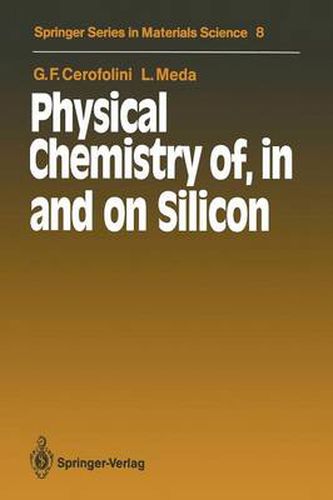Readings Newsletter
Become a Readings Member to make your shopping experience even easier.
Sign in or sign up for free!
You’re not far away from qualifying for FREE standard shipping within Australia
You’ve qualified for FREE standard shipping within Australia
The cart is loading…






This title is printed to order. This book may have been self-published. If so, we cannot guarantee the quality of the content. In the main most books will have gone through the editing process however some may not. We therefore suggest that you be aware of this before ordering this book. If in doubt check either the author or publisher’s details as we are unable to accept any returns unless they are faulty. Please contact us if you have any questions.
The aim of this book is twofold: it is intended for use as a textbook for a ~ourse on electronic materials (indeed, it stems from a series of lectures on this topic delivered at Milan Polytechnic and at the universities of Modena and Parma), and as an up-to-date review for scientists working in the field ::>f silicon processing. Although a number of works on silicon are already available, the vast amount of existing and new data on silicon properties are nowhere adequately summarized in a single comprehensive report. The present volume is intended to fill this gap. Most of the examples dealt with are taken from the authors’ every day experience, this choice being dictated merely by their greater knowl edge of these areas. Certain aspects of the physics of silicon have not been included; this is either because they have been treated in standard textbooks (e.g. the inhomogeneously doped semiconductor and the chem istry of isotropic or preferential aqueous etching of silicon), or because they are still in a rapidly evolving phase (e.g. silicon band-gap engineering, generation-recombination phenomena, cryogenic properties and the chem istry of plasma etching). In line with the standard practice in microelectronics, CGS units will be used for mechanical and thermal quantities, and SI units for electrical quan tities. All atomic energies will be given in electronvolts and the angstrom will be the unit of length used for atomic phenomena.
$9.00 standard shipping within Australia
FREE standard shipping within Australia for orders over $100.00
Express & International shipping calculated at checkout
This title is printed to order. This book may have been self-published. If so, we cannot guarantee the quality of the content. In the main most books will have gone through the editing process however some may not. We therefore suggest that you be aware of this before ordering this book. If in doubt check either the author or publisher’s details as we are unable to accept any returns unless they are faulty. Please contact us if you have any questions.
The aim of this book is twofold: it is intended for use as a textbook for a ~ourse on electronic materials (indeed, it stems from a series of lectures on this topic delivered at Milan Polytechnic and at the universities of Modena and Parma), and as an up-to-date review for scientists working in the field ::>f silicon processing. Although a number of works on silicon are already available, the vast amount of existing and new data on silicon properties are nowhere adequately summarized in a single comprehensive report. The present volume is intended to fill this gap. Most of the examples dealt with are taken from the authors’ every day experience, this choice being dictated merely by their greater knowl edge of these areas. Certain aspects of the physics of silicon have not been included; this is either because they have been treated in standard textbooks (e.g. the inhomogeneously doped semiconductor and the chem istry of isotropic or preferential aqueous etching of silicon), or because they are still in a rapidly evolving phase (e.g. silicon band-gap engineering, generation-recombination phenomena, cryogenic properties and the chem istry of plasma etching). In line with the standard practice in microelectronics, CGS units will be used for mechanical and thermal quantities, and SI units for electrical quan tities. All atomic energies will be given in electronvolts and the angstrom will be the unit of length used for atomic phenomena.